Welcome to the world of the biggest spiders! Spiders are one of the most diverse groups of animals on the planet, with over 48,000 species identified so far. They come in all shapes and sizes, from tiny jumping spiders to massive tarantulas.
In this article, we will be exploring the top 10 biggest spiders in the world. These spiders are not for the faint-hearted, as some of them can grow to be as big as a dinner plate!
You are reading: The Top 10 Biggest Spiders In The World
We will be looking at their size, habitat, and other interesting facts. So, if you’re ready to learn about some of the largest arachnids on the planet, read on!
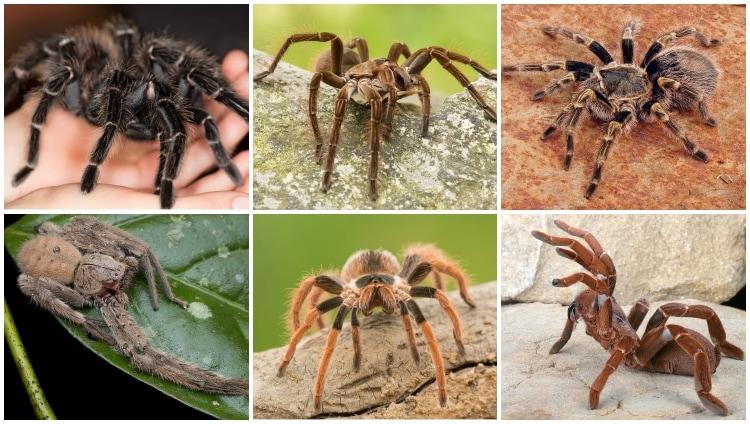
The Top 10 Biggest Spiders In The World
Giant Huntsman Spider
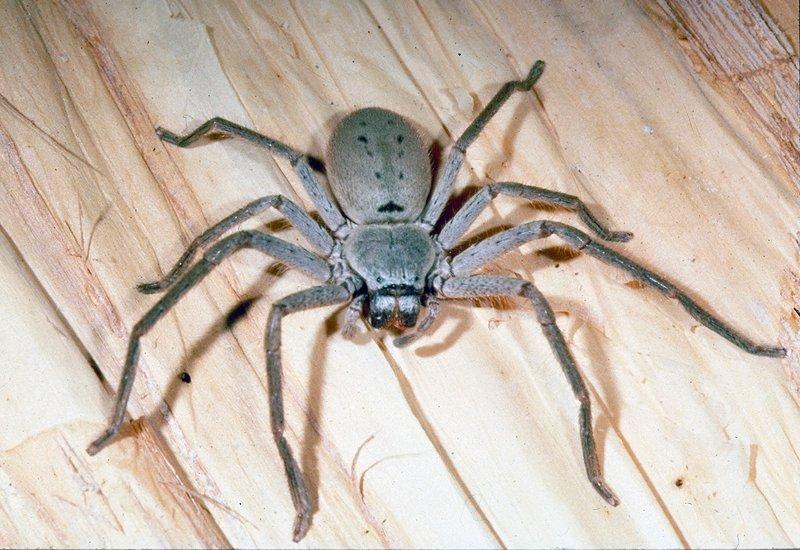
The Giant Huntsman Spider (Heteropoda maxima) is the largest spider in the world by leg span, according to various sources. This species of huntsman spider is found in a single cave complex in Laos, Asia and was only discovered in 2001.
The leg span of the Giant Huntsman Spider can measure up to 30cm (12 inches), which is about the size of a large dinner plate or school ruler. Although they are the largest spider in the world by leg span, their body length is relatively small in comparison.
The Giant Huntsman Spider has a yellowish-brown color and very long, banded legs. They feed on large insects and possibly rodents and are preyed upon by reptiles, birds, and small mammals. The top speed of the Giant Huntsman Spider can reach up to 1m per second. The lifespan of this spider is around 2 years.
Due to the difficulty of accessing the caves where the Giant Huntsman Spider lives, very few people in the world have actually seen them in the wild.
Goliath Birdeater
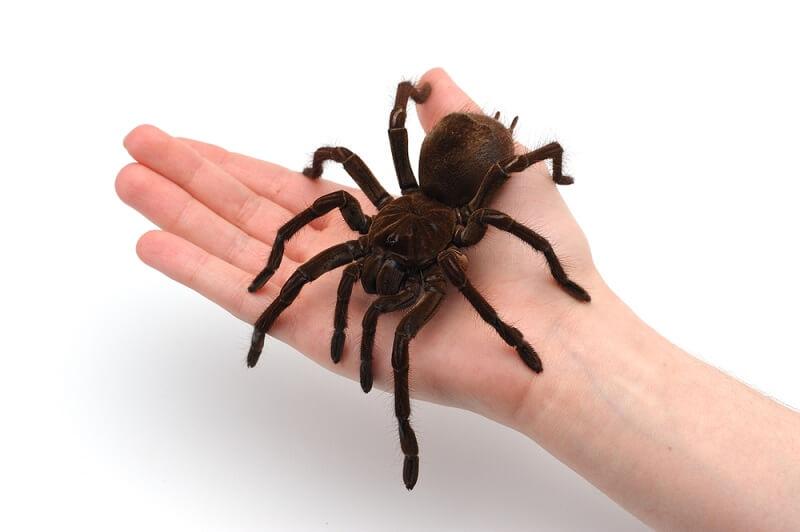
The Goliath Birdeater (Theraphosa blondi) is the largest spider in the world by mass and body length, and second to the Giant Huntsman Spider by leg span. It belongs to the tarantula family Theraphosidae and is found in northern South America, including Suriname, Guyana, French Guiana, northern Brazil, eastern Colombia, and southern Venezuela.
The Goliath Birdeater is terrestrial, living in deep burrows, and is found commonly in marshy or swampy areas. It has a mostly tan to light brown and golden-hued coloring on the body.
The spider is nocturnal and feeds on insects, frogs, and rodents. Although it is called the Goliath Birdeater, it does not usually eat birds, but it is capable of consuming them. The spider is part of the local cuisine in northeastern South America, prepared by singeing off the urticating hairs and roasting it in banana leaves. The flavor has been described as “shrimp-like”.
The Goliath Birdeater is one of the least friendly tarantulas and is known to be a little more skittish.
Brazilian Salmon Pink Birdeater
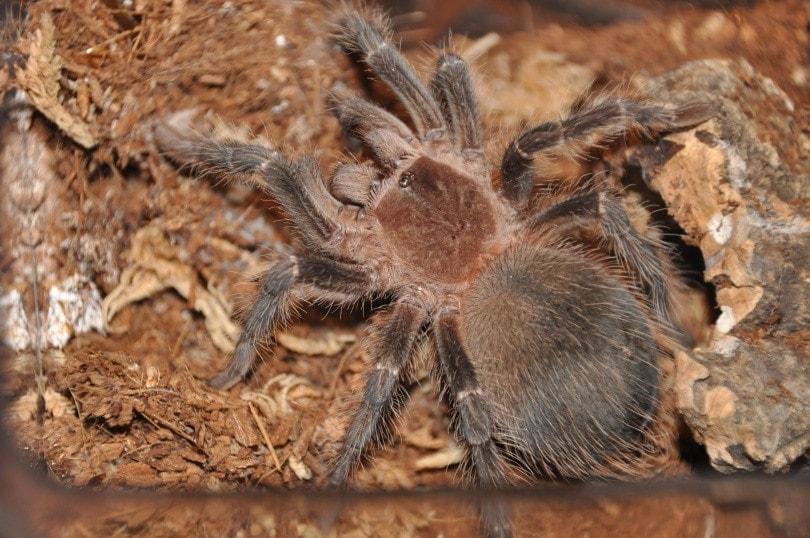
The Brazilian Salmon Pink Birdeater (Lasiodora parahybana) is a species of tarantula that is native to northeastern Brazil. It is also known as the salmon pink bird-eating tarantula or LP. The Brazilian Salmon Pink Birdeater is considered to be the fourth largest tarantula in the world, with a leg span of up to 11 inches.
Females can weigh more than 100 grams and are often bulky, with a large body size in comparison to their legs, while males tend to be slender in body size.
The Brazilian Salmon Pink Birdeater is a terrestrial species that lives in deep burrows in marshy or swampy areas. They are nocturnal and feed on insects, frogs, and rodents.
Read more : What Types Of Wolves Are There In North America
The spider is more tolerant and social than most species. The Brazilian Salmon Pink Birdeater is a popular species in the pet trade due to its size and striking appearance. They are also used for their venom in medical research.
Brazilian Giant Tawny Red Tarantula

The Brazilian Giant Tawny Red Tarantula (Grammostola anthracina) is a species of tarantula that is found in the deserts, grasslands, and scrublands of Uruguay, Paraguay, Brazil, and Argentina. It was initially assigned to the genus Avicularia before being reclassified.
The Brazilian Giant Tawny Red Tarantula is a terrestrial species that will often make a burrow or make use of an abandoned burrow. It is noted for its tawny red color and can grow up to 2.5 inches in body length and 2.3 inches in leg length.
Males and females look the same until the ultimate (final) molt of the males. At this point, the male will exhibit sexual dimorphism in the form of a duller coloration and legginess. The Brazilian Giant Tawny Red Tarantula is a relatively docile species and is popular in the pet trade due to its size and striking appearance. It feeds on small insects and is not known to be a threat to humans.
Hercules Baboon Spider
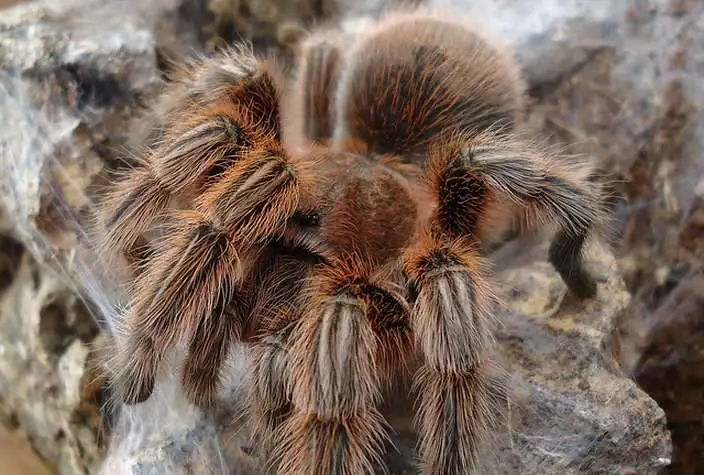
The Hercules Baboon Spider (Hysterocrates hercules) is a species of tarantula that is native to different parts of Africa, particularly Nigeria. It belongs to the family of tarantulas and is known for its large size.
The Hercules Baboon Spider has a unique appearance, with shorter back legs and longer, thicker front legs, as well as slender femurs. It is often compared to the Goliath Grand Baboon Spider (Hysterocrates sp.) due to its size.
The Hercules Baboon Spider is a terrestrial species that lives in burrows and feeds on insects. It is relatively docile and is popular in the pet trade due to its size and striking appearance. The Hercules Baboon Spider has been considered as one of the world’s heaviest spiders, but this title has been challenged by the King Baboon Spider (Pelinobius muticus) from Tanzania and Kenya.
Colombian Giant Tarantula
The Colombian Giant Tarantula (Megaphobema robustum) is a species of tarantula that is native to the tropical rainforests of Colombia and Brazil. It is also known as the Colombian Giant Redleg Tarantula.
The Colombian Giant Tarantula has a leg span of 6 to 8 inches and is known to eat crickets, other large insects, small lizards, and mice. Their carapace is a deep black color, with a pale orange color, and the opisthosoma is also a deep black color covered with orange hairs. Most of the legs, with the exception of the femur, which is also black, are a bright orange and are covered in orange hairs.
The Colombian Giant Tarantula is a shy species and is more willing to be defensive than other New World tarantulas. It is a terrestrial species that lives in burrows and is relatively docile. The Colombian Giant Tarantula is popular in the pet trade due to its size and striking appearance.
Chaco Golden Knee Tarantula
The Chaco Golden Knee Tarantula (Grammostola pulchripes) is a species of tarantula that is native to the grasslands of Argentina and Paraguay. It is a terrestrial species that burrows when it can.
The Chaco Golden Knee Tarantula is a large but docile species, making it perfect for any collection. It is known for its dark colors with gold striped knees, and will often hang out in the open.
The Chaco Golden Knee Tarantula can grow up to 16 to 17cm in size, with a leg span of 7 to 8 inches (17.8-20.3 cm). Mature males have longer legs and smaller bodies than females, and they possess tibial hooks or apophyses to hold back a female’s fangs during mating. Males also possess modified pedipalps to insert sperm into the female’s genital operculum.
The Chaco Golden Knee Tarantula is a very calm and docile tarantula, which, along with its striking appearance and large size, makes it a popular species in the pet trade.
Brazilian Wandering Spider
The Brazilian Wandering Spider (Phoneutria fera) is an aggressive and highly venomous spider that was first discovered in Brazil. It is also known as the armed spider or banana spider.
The Brazilian Wandering Spider is one of the most venomous spiders on Earth, and its bite can be deadly to humans, especially children. However, antivenom makes death unlikely.
Read more : The Top 9 Animals With The Shortest Lifespan
There are nine species of Brazilian Wandering Spider, all of which are nocturnal and can be found in Brazil, as well as throughout Central and South America, from Costa Rica to Argentina. The Brazilian Wandering Spider is a large spider, with bodies reaching up to 2 inches (5 centimeters) and a leg span of up to 7 inches (18 cm). The species vary in color, though all are hairy and mostly brown and gray, although some species have lightly colored spots on their abdomen.
The Brazilian Wandering Spider is also known for its ability to cause priapism, a prolonged and painful erection, in men. Despite its venomous nature, the Brazilian Wandering Spider is popular in the pet trade due to its size and striking appearance.
Six-Eyed Sand Spider
The Six-Eyed Sand Spider (Sicarius hahni) is a species of arachnid that is native to the deserts and hot, dry climates throughout Southern Africa. It is also known as the six-eyed crab spider due to its flattened stance and laterigrade legs.
The Six-Eyed Sand Spider is a medium-sized spider with a body length of up to 0.6 inches (15 millimeters) and a width across the legs of about 2 inches (50 millimeters). The spider has six eyes arranged on its head, which give it excellent vision and help it to hunt prey effectively. Its body is brown, yellow, or reddish-brown in color and has short hairs all over.
The Six-Eyed Sand Spider is covered in small hairs, called setae, which serve to hold particles of sand, providing effective camouflage even when the spider is not buried. The Six-Eyed Sand Spider is a predatory species that feeds on small insects and other arthropods. The venom of this spider’s bite is said to be the most dangerous on record.
However, finding this species would be incredibly difficult as they are masters of camouflage.
Sydney Funnel-Web Spider
The Sydney Funnel-Web Spider (Atrax robustus) is a species of venomous mygalomorph spider native to eastern Australia, usually found within a 100 km radius of Sydney. It is a member of a group of spiders known as Australian funnel-web spiders.
The Sydney Funnel-Web Spider is one of the most venomous spiders on Earth, and its bite can be deadly to humans, especially children. The venom of this spider’s bite is said to be the most dangerous on record.
However, antivenom makes death unlikely. The spider is mainly active at night, as typical day-time conditions would dehydrate them. During the day, they seek cover in cool, moist hideaways. After heavy rain, spider activity is increased as their burrows may be flooded.
When threatened or provoked, funnel-web spiders will display aggressive behavior, rearing up on their hind legs and displaying their fangs. When biting, the funnel-web spider maintains a tight grip on its victim, often biting repeatedly. The bite of a Sydney Funnel-Web Spider is initially very painful, with clear fang marks separated by several millimeters. The size of fangs is responsible for the severity of the bite.
The Sydney Funnel-Web Spider is a large, black aggressive spider with large powerful fangs. Males have a large mating spur projecting from the middle of their second pair of legs. The spider lives in burrows or crevices in rocks or around house foundations, lining the burrows with silk.
The Sydney Funnel-Web Spider is a fearsome spider with a notorious reputation, but some of its reputation is exaggerated.
FAQS
1. What is the biggest spider in the world?
The biggest spider in the world by leg span is the Giant Huntsman Spider, which can have a leg span of up to 30cm (12 inches) .
2. What is the largest spider by mass and body length?
The Goliath Birdeater is the largest spider in the world by mass and body length, and second to the Giant Huntsman Spider by leg span.
3. What is the most venomous spider on Earth?
The Sydney Funnel-Web Spider is one of the most venomous spiders on Earth, and its bite can be deadly to humans, especially children.
4. Are these spiders dangerous to humans?
Some of the spiders on this list, such as the Sydney Funnel-Web Spider and the Brazilian Wandering Spider, are highly venomous and can be deadly to humans. However, antivenom makes death unlikely. It’s important to exercise caution and seek medical attention if bitten by any spider.
5. Are these spiders commonly kept as pets?
Yes, some of the spiders on this list, such as the Brazilian Salmon Pink Birdeater and the Chaco Golden Knee Tarantula, are popular in the pet trade due to their size and striking appearance. However, it’s important to research the care requirements of any spider before keeping it as a pet.
6. Where are these spiders found?
These spiders are found all over the world, from South America to Africa and Australia. The habitats of these spiders vary widely, from rainforests to deserts and grasslands.
Source: https://petstutorial.com
Category: Animals










